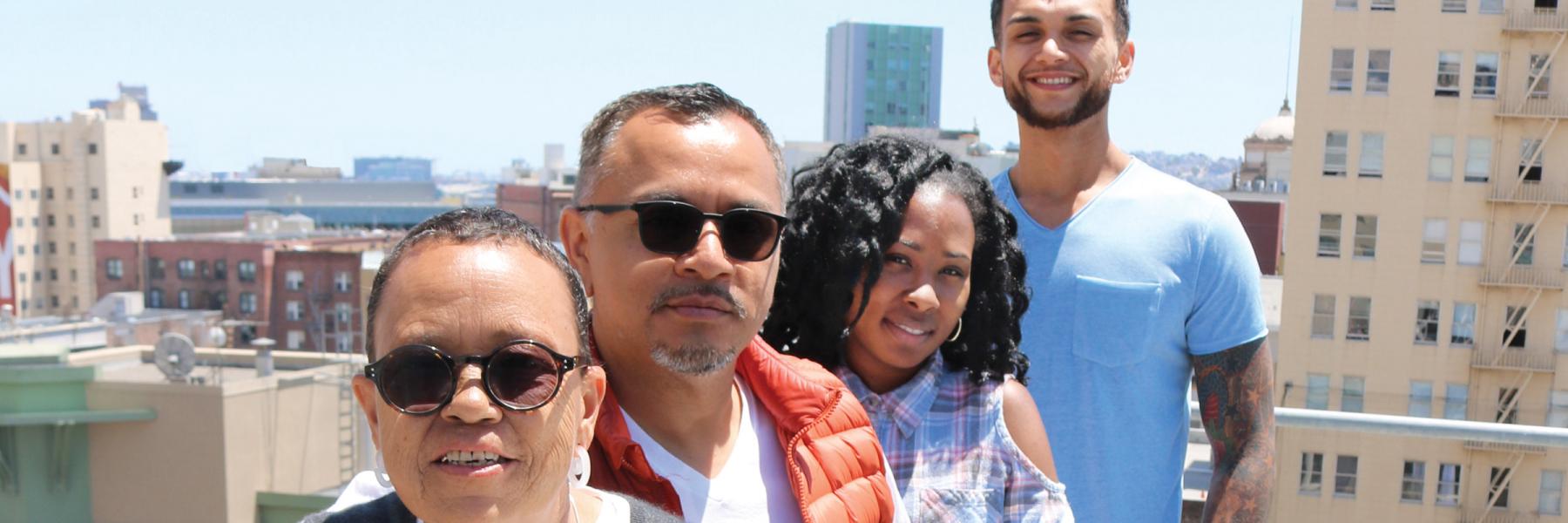
Like many other areas throughout the U.S., San Francisco’s Tenderloin district has been hit hard by hepatitis. It is a community where poverty, drug use, and social justice intersect. The neighborhood is also home to the Glide Foundation, a non-profit organization that serves the area’s poor and disenfranchised. The rooftop of the Glide Foundation’s Ellis Street building served as the location of the cover photo shoot for the 2018 POSITIVELY AWARE Hepatitis B & C Drug Guide. Paul Harkin, Glide’s Harm Reduction Program Manager, shot the cover, photographing foundation staff who themselves are a reflection of the community they serve.
Janet Ector, 60, spent most of her life not knowing that she had hepatitis C (HCV). The initial symptoms were so debilitating, Ector was unable to function. But when they eventually passed, she assumed she’d had mononucleosis and put it out of her mind. It wasn’t until 1998 when Ector was diagnosed with breast cancer did she learn that a series of blood panels revealed she also had chronic HCV.
After a difficult and unsuccessful course of treatment involving interferon and ribaviran in 2007, it wasn’t until 2016 that Ector’s medical providers recommended her to take Harvoni. On Harvoni, Ector cleared HCV within three months.
Her years-long journey to successful HCV treatment included stigma she encountered, often from her own doctors. “I was always candid about the fact that I had contracted the virus as a result of injection drug use and sharing equipment,” she says.
Today, Ector is an assistant manager of the Glide Foundation’s harm reduction programs. “I grew up in a family of radical activists who were passionate about social justice, and they passed that legacy on to me from a very early age,” she says. “That is why I do the work I do, in the name of the loved ones I have lost to the ravages of poverty, oppression, and stigma and in the hope that we can establish meaningful change for generations to come.”
Khaiya Croom, 25, has also lost loved ones to hepatitis. “Growing up, there were a couple of deaths in my family,” she says. “I was told that they both died from liver failure; I never questioned that. Later, I learned about their history of injection drug use and that they had been treated for hepatitis with interferon.” Croom is now an HCV health systems navigator at Glide. “I am hyped about getting individuals linked to a better, advanced treatment. Sometimes I wish I could travel back in time to possibly save their lives, but I am motivated to spread the word about getting individuals cured of hepatitis C.”
Although he doesn’t have hepatitis, José Mañuel Velázquez, 46, has been living with HIV for 14 years. “I felt frustrated and insecure when I found out about my own status,” says Velázquez, who does HIV and HCV testing at Glide. “Similarly, many people living with HIV/hepatitis C deal with stigma and guilt related to their status. This can cause feelings of isolation and can become a barrier to treatment.”
Matthew Claveria, 32, believes allies can play an important role in the fight against hepatitis.
“As an HIV/HCV testing counselor, I have learned from my clients the challenges they face in accessing culturally-aware medical treatment,” he says. “If you are living with hepatitis, you don’t need to feel isolated. There are treatments that can help cure you. Find an advocacy group in your community that can help link you to the right care today; you don’t have to fight this alone.”


